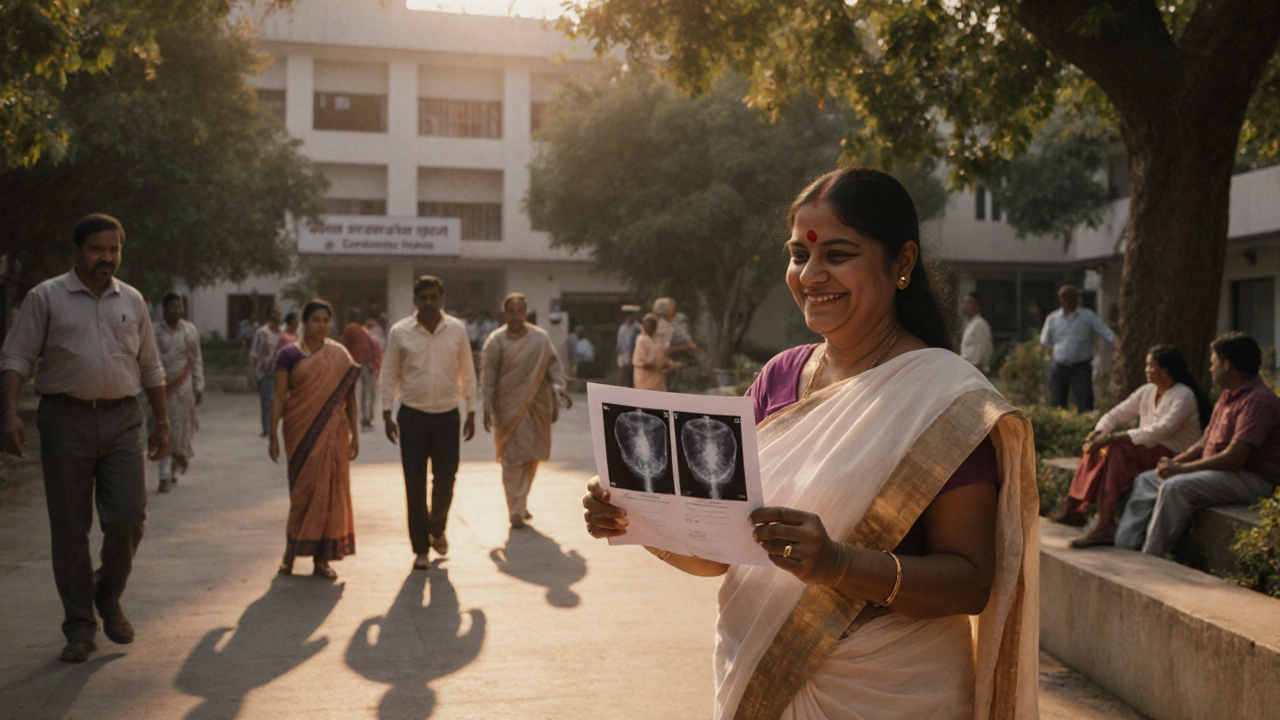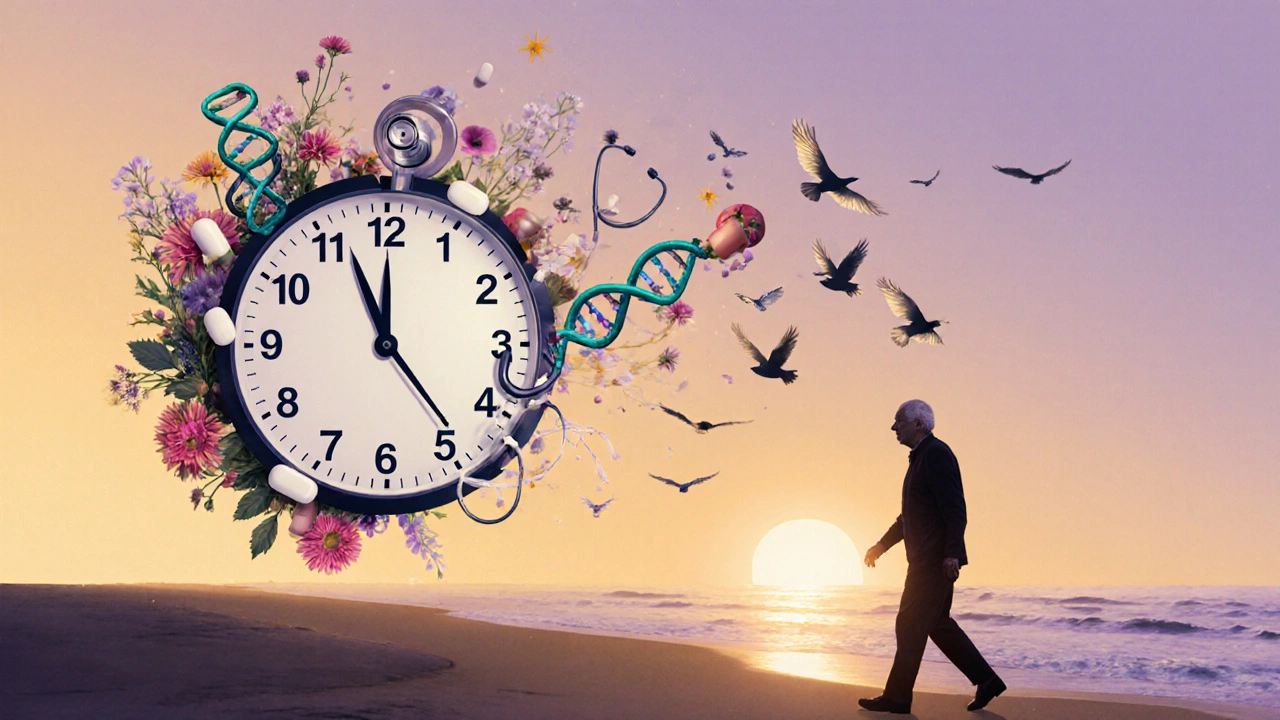
Cancer Survival Rate Calculator
Personalized Survival Estimate
Estimate realistic survival rates based on medical factors from recent studies. Remember: this is a statistical average—not a personal prediction.
Your Estimated Survival
Based on medical data from recent studies. These are statistical averages—not a personal prediction.
What this means: Survival rates show the percentage of people who live at least 5 years after diagnosis. They are statistical averages based on groups of patients with similar characteristics.
Factors to remember: Your individual outcome depends on many factors including treatment response, access to care, and lifestyle choices. Modern treatments like immunotherapy and targeted therapies are improving outcomes significantly.
When someone hears the word cancer, the first question that pops up isn’t about treatment options or side effects-it’s usually, How long do I have? There’s no single answer. Some people live for years with cancer. Others face a much shorter timeline. The truth isn’t found in scary headlines or vague internet searches. It’s in the details-type of cancer, stage at diagnosis, age, overall health, and access to care.
It’s not one disease-it’s hundreds
Cancer isn’t one thing. A tumor in the breast behaves nothing like a tumor in the pancreas. The same goes for survival. Someone with early-stage thyroid cancer often lives a normal lifespan after treatment. Someone with advanced pancreatic cancer may have months, not years. The five-year survival rate for localized thyroid cancer is over 98%. For metastatic pancreatic cancer, it’s around 3%.That’s not a mistake. Those numbers are real. And they’re why blanket statements like “cancer means you’re dying soon” are dangerously misleading. Survival rates are based on data from thousands of people, grouped by cancer type, stage, and age. They don’t predict your life. They help doctors understand what’s possible.
Stage matters more than you think
Stage is the biggest factor in survival. Stage I means the cancer is small and hasn’t spread. Stage IV means it’s moved to other organs. The difference between Stage I and Stage IV can mean the difference between 90%+ survival and under 20%.Take colon cancer. If caught early-before it spreads beyond the colon-over 90% of people live at least five years. That’s better than many common diseases. But if it’s spread to the liver or lungs, that number drops to about 14%. That’s not a death sentence. It’s a signal: treatment needs to be more aggressive. New drugs, targeted therapies, and immunotherapies are changing outcomes even for Stage IV patients.
Many people don’t realize that cancer can be managed like diabetes or high blood pressure. For some, it becomes a chronic condition. A woman in her 50s with hormone-positive breast cancer might take pills for 10 years. She works, travels, watches her kids grow up. She has cancer, but cancer doesn’t define her days.
Age and health play a huge role
A 70-year-old with heart disease and diabetes won’t respond the same way to chemo as a 40-year-old who runs marathons. Doctors don’t just look at the cancer. They look at the whole person.Studies show that older adults with strong physical function and no other major illnesses often do just as well as younger patients-even with advanced cancer. One 2023 study from the Indian Journal of Cancer found that patients over 65 who stayed active during treatment had 30% better survival odds than those who became sedentary.
It’s not about being young. It’s about being strong. Eating well, moving daily, sleeping enough, and managing stress aren’t just “nice to have.” They’re part of the treatment plan.
Treatment has changed-dramatically
Ten years ago, a lung cancer diagnosis often meant a few months of chemo and then palliative care. Today, many patients get targeted therapy or immunotherapy. These drugs don’t attack all cells like chemo. They find and destroy only cancer cells.For example, patients with non-small cell lung cancer who have an EGFR mutation can take a daily pill. Many live five years or longer. Some live ten. A decade ago, that was unheard of.
Same with melanoma. Once, metastatic melanoma meant survival measured in months. Now, with immunotherapy drugs like pembrolizumab, nearly half of patients live five years. Some are still alive after ten.
These aren’t rare cases. They’re becoming the new normal-for the right cancers, at the right stage, with the right mutations.
Access to care changes everything
In cities like Bangalore, Mumbai, or Delhi, people have access to advanced diagnostics, clinical trials, and specialists. In rural areas, delays in diagnosis are common. A lump found late. A cough ignored for months. By the time treatment starts, the cancer is advanced.That’s why survival rates in India vary widely. Urban patients with stage I breast cancer have survival rates close to global averages. Rural patients with the same diagnosis often face much lower odds-not because the cancer is worse, but because it was found later.
Early detection saves lives. A mammogram. A colonoscopy. A skin check. These aren’t luxury tests. They’re lifesavers. And they’re available in public hospitals across India, often for free or low cost.

Survival isn’t just about years-it’s about quality
Some people want every possible treatment, even if it means nausea, fatigue, and hospital visits. Others choose comfort over extended life. Neither is right or wrong.One man in his 60s with prostate cancer chose not to start hormone therapy. He didn’t want the side effects-hot flashes, weight gain, loss of energy. He traveled, spent time with his grandkids, and lived well for three years. He died peacefully, surrounded by family.
Another woman took every treatment offered. She was in and out of hospitals for five years. She survived longer, but spent most of that time feeling unwell.
Survival isn’t just about ticking off years. It’s about how you live them. That’s why doctors now ask: What matters most to you? What are you willing to go through? What do you want your days to look like?
Hope isn’t about curing-it’s about living
No one wants to hear, “You might not be cured.” But many people can live well with cancer for a long time. And new treatments keep coming. Every year, more drugs get approved. More clinical trials open. More people survive longer.Hope doesn’t mean a miracle cure. It means knowing you’re not alone. That there are options. That you can still laugh, love, and plan for tomorrow-even if tomorrow looks different than you thought.
There’s no magic number. But there is truth: many people live far longer than they’re told. And many live well, even with cancer.
Can you live 10 years with cancer?
Yes, many people live 10 years or longer with cancer-especially if it’s caught early and responds to treatment. Thyroid, prostate, breast, and some types of skin and blood cancers often have high long-term survival rates. Even some advanced cancers, like melanoma and lung cancer, now have patients living a decade or more thanks to newer therapies.
Does cancer always come back?
Not always. Many cancers, especially when caught early, never return. For others, like ovarian or triple-negative breast cancer, recurrence is more common. But even if cancer comes back, it doesn’t mean the end. New treatments can often control it again for months or years. Many people live with cancer that returns multiple times, managing it like a chronic illness.
Is stage 4 cancer always fatal?
No. Stage 4 means cancer has spread, but it doesn’t mean immediate death. Survival rates are low, but they’re not zero. Some people with stage 4 breast or colon cancer live five to ten years with treatment. Immunotherapy and targeted drugs have turned stage 4 into a manageable condition for some. It’s serious, but not always a death sentence.
What affects cancer survival the most?
The biggest factors are: cancer type, stage at diagnosis, age, overall health, access to treatment, and how well the cancer responds to therapy. Lifestyle also matters-eating well, staying active, and avoiding smoking or heavy drinking improve outcomes. Mental health and support systems help too. Survival isn’t just about medicine-it’s about the whole person.
Can lifestyle changes really help?
Yes. Studies show that people who eat more vegetables, stay physically active, avoid processed meats, and maintain a healthy weight during and after treatment have better survival rates. Exercise reduces inflammation, boosts immunity, and helps manage treatment side effects. Even light walking 30 minutes a day can make a difference. It’s not a cure-but it’s powerful support.
Are survival rates different in India?
Yes, but not because Indian patients respond worse to treatment. The gap comes from late diagnosis and unequal access. In cities, survival rates for breast and cervical cancer are close to global averages. In rural areas, delays mean cancer is often found at later stages, lowering survival. Screening programs and awareness campaigns are slowly closing this gap.
Should I get a second opinion?
Always. Cancer treatment is complex. A second opinion can confirm your diagnosis, reveal new treatment options, or suggest a clinical trial you didn’t know about. Many top hospitals in India offer free second opinions through public cancer centers. Don’t feel guilty asking-it’s part of being your own advocate.
What to do next
If you or someone you love has been diagnosed:- Ask for the exact type and stage of cancer.
- Request genetic or biomarker testing-this can open doors to targeted therapies.
- Find out what treatments are covered by your insurance or public health program.
- Connect with a cancer support group. Talking to others who’ve been there helps more than you think.
- Don’t delay screening. If you’re over 40, get regular check-ups. Early detection saves lives.
Cancer isn’t a countdown. It’s a journey-and the pace of that journey depends on far more than a statistic. You have more control than you know. And you’re not alone.

Write a comment